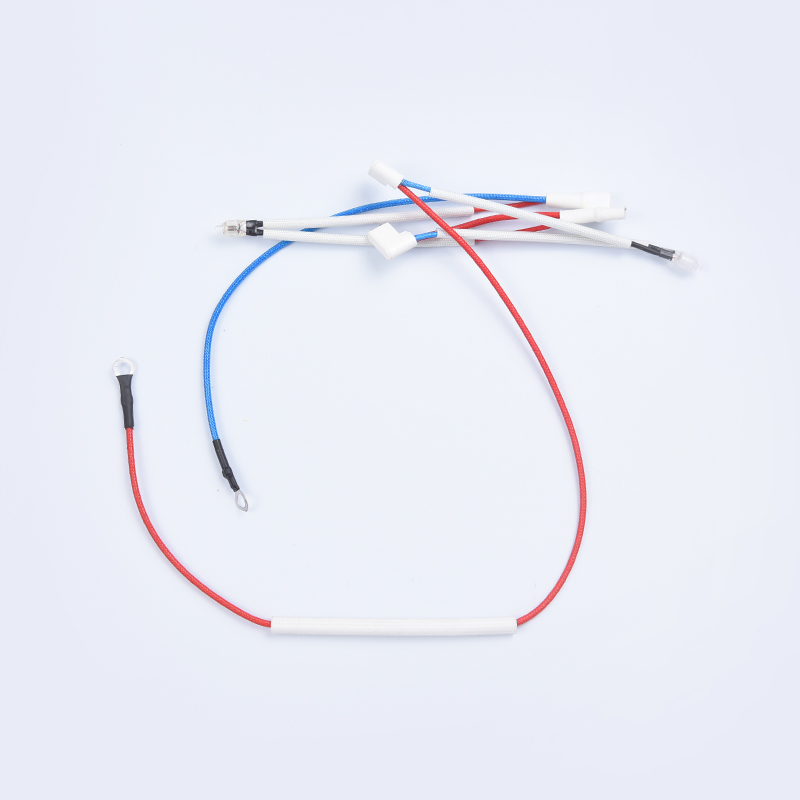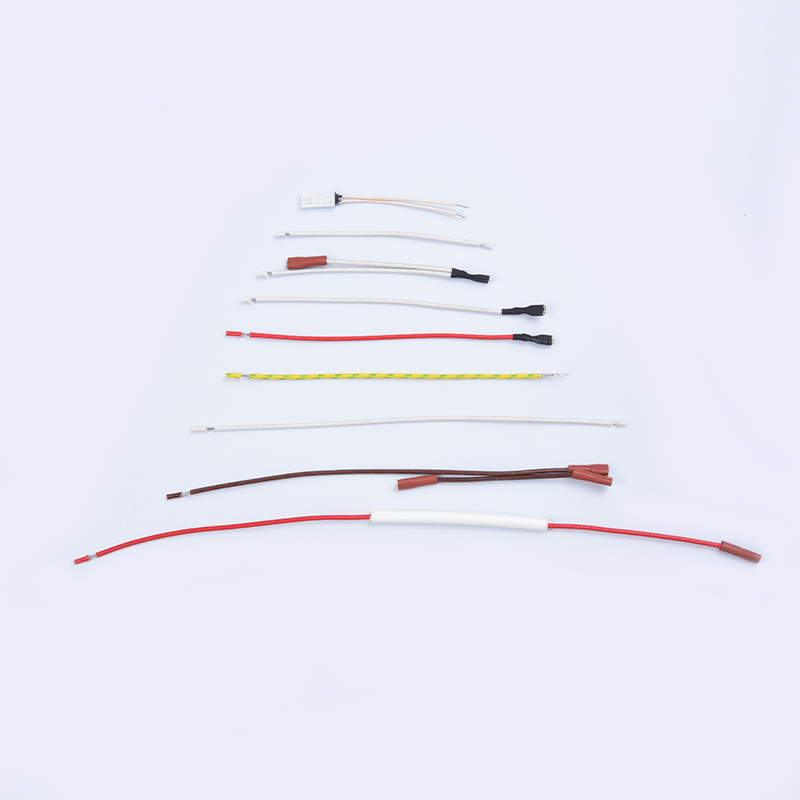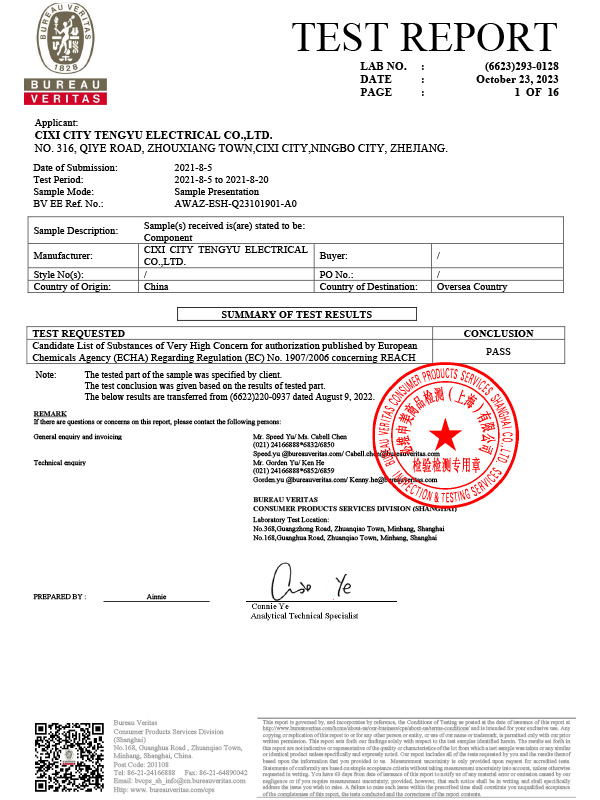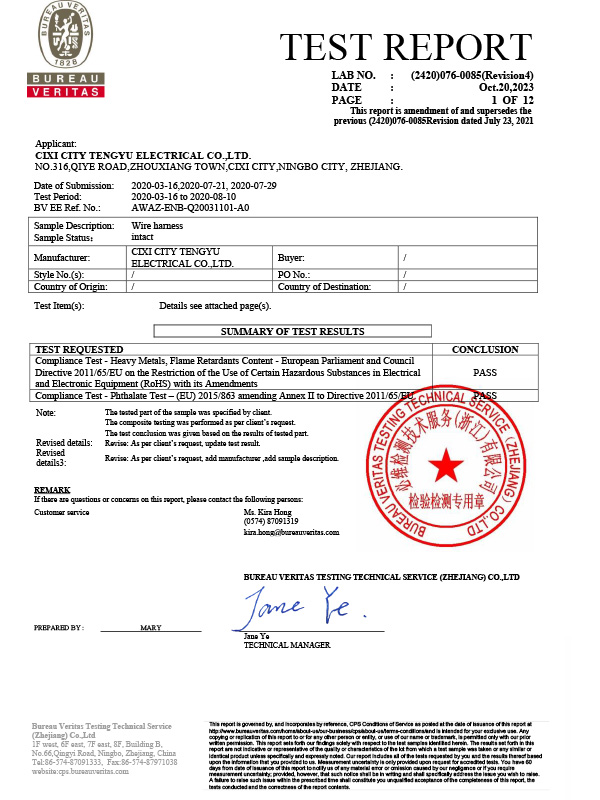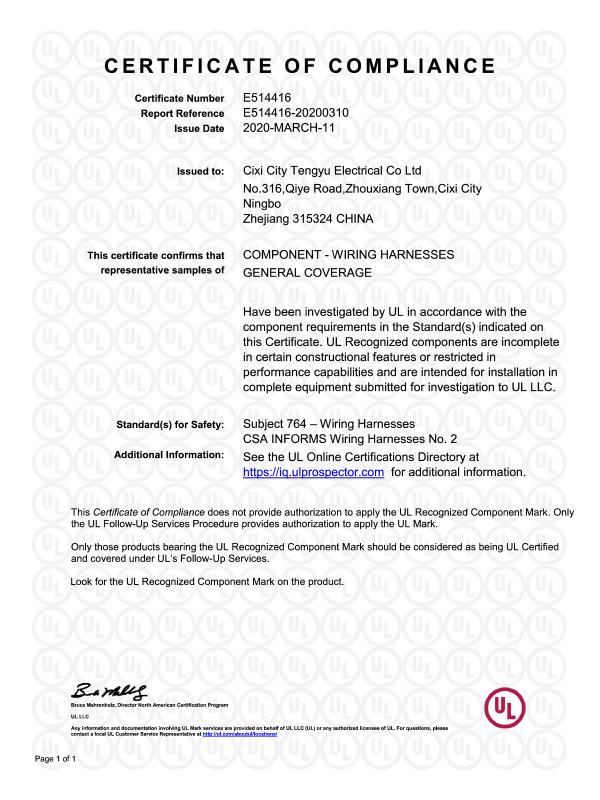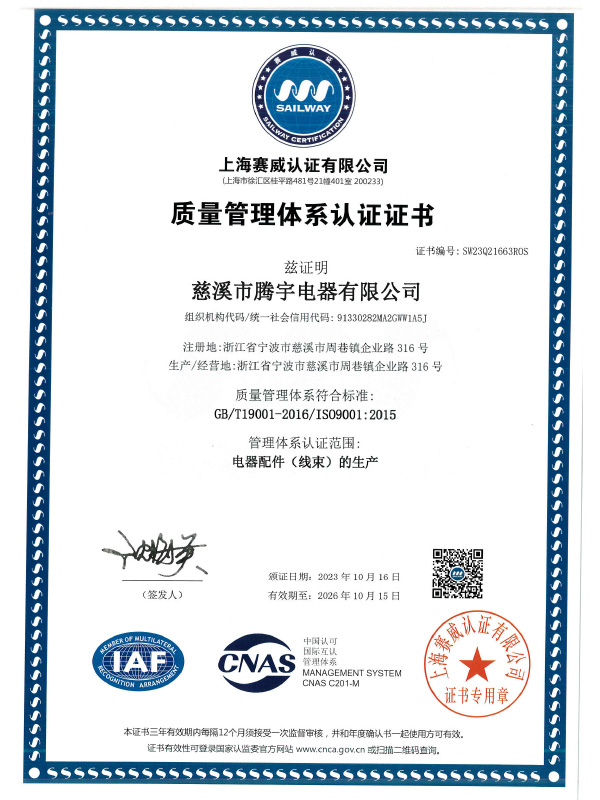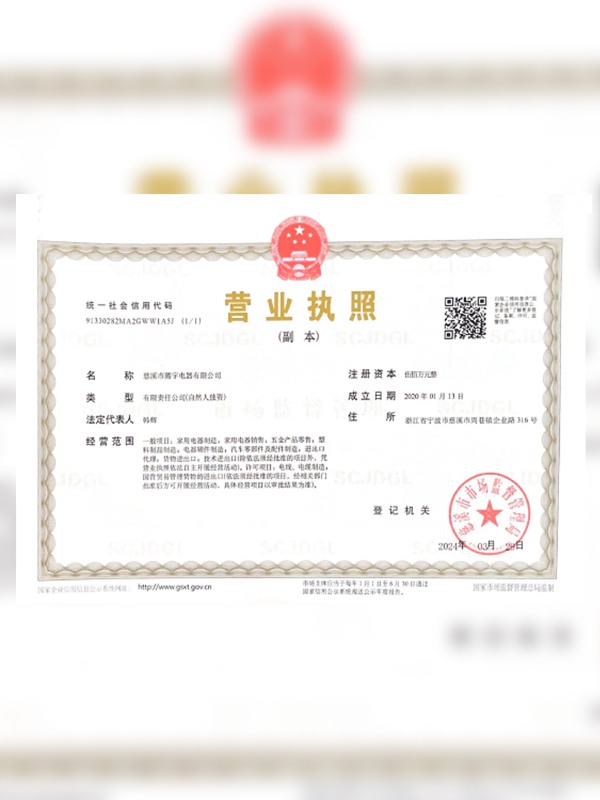What is the function of an electric kettle wiring harness?
The electric kettle wiring harness plays a crucial role, primarily in the following areas:
Power connection: The heating element of an electric kettle requires a stable power supply to operate effectively, and the wiring harness acts as a bridge between this power source and the heating element. The wiring harness ensures stable current transmission to the heating element, ensuring that it heats water to the user-set temperature in a short period of time. A high-quality wiring harness design reduces losses during current transmission, ensuring heating speed and temperature stability. Unstable current transmission in the wiring harness may prevent the heating element from reaching the desired temperature, resulting in prolonged heating time or inaccurate temperature control. Furthermore, the wiring harness must be able to withstand the high temperatures generated by the heating element during operation to effectively ensure the proper operation of the entire electric kettle system.
Temperature control and safety protection: The wiring harness not only transmits current but also connects the electric kettle's temperature control system, ensuring stable operation during use. When the water reaches the set temperature, the thermostat disconnects the power supply to the heating element through the wiring harness, preventing overheating and potentially damaging the kettle or causing safety accidents. The wiring harness also connects to a temperature sensor, transmitting real-time water temperature signals to the user, allowing them to monitor water temperature fluctuations at any time. Furthermore, the wiring harness is connected to indicator lights, which display the water temperature or heating status, helping users intuitively understand the kettle's current operating status and ensuring safe use. A well-designed temperature control design and high-quality wiring harness can effectively reduce overheating or overcooling, ensuring that each heating cycle meets the desired standards.
Signal Transmission: The proper operation of an electric kettle depends not only on a stable current supply but also on signal transmission between various internal components via the wiring harness. The wiring harness effectively connects multiple components, including the thermostat, heating element, temperature sensor, and indicator light, ensuring the coordinated operation of the electrical system. For example, when the temperature sensor detects a change in water temperature, it transmits a signal to the thermostat via the wiring harness, turning the heating element on and off. Accurate transmission of these signals is essential for the proper operation of the electric kettle. If a problem with the wiring harness results in poor signal transmission or a disconnected connection, the heating element may not heat the water to the desired temperature, or even fail to start or malfunction. Furthermore, the design and material quality of the wiring harness directly impact the stability and accuracy of signal transmission. Failure in any single link can cause problems with the entire electrical system, even leading to short circuits or other electrical safety hazards. Therefore, ensuring the quality and proper connection of the wiring harness is crucial.
How does the electric kettle wiring harness affect heating efficiency?
The heating process of an electric kettle primarily relies on the current transmission efficiency of the heating element, and the wiring harness is one of the key components that enables this process. The quality of the electric kettle wiring harness directly determines whether current can be efficiently and stably transmitted to the heating element, which in turn affects the speed and quality of heating.
Current Transmission Efficiency and Wire Material: The wires in an electric kettle wiring harness are primarily responsible for current transmission, making the choice of wire material crucial. Copper is a common conductive material with excellent conductivity, which significantly reduces current loss during transmission, thereby improving heating efficiency. Improper wire material selection can cause resistance during current transmission, resulting in current loss and, in turn, impairing the heating efficiency of the heating element. This loss not only reduces heating efficiency but can also cause uneven temperature rise within the heating element, affecting the speed and quality of boiling water.
Wiring harness insulation performance: The quality of the insulation material also affects the stable transmission of current. High-quality insulation materials, such as silicone or PVC, effectively prevent current leakage and ensure that the wiring harness will not age or crack under prolonged heating. If the insulation layer is not thick enough or is of poor quality, it may cause partial current leakage or short circuits, thus affecting the stable operation of the electric kettle's heating element. Furthermore, low-quality insulation materials may gradually lose their isolation properties at high temperatures, or even cause electrical failure, resulting in the heating element failing to reach the desired temperature or uneven heating.
Wiring harness connection design: The design of the wiring harness's connection points also significantly affects the efficiency of current flow. The design of the joints must ensure good contact to avoid poor or loose connections that could lead to unstable current transmission. Excessive resistance or loose contact at the connection points increases resistance to current flow, thereby affecting the heating effect of the heating element. For example, oxidation or corrosion at the wiring harness joints significantly reduces current transmission efficiency, resulting in longer heating times and increased energy waste.
Heating speed and current stability: The efficiency of the heating element depends on a stable current supply. The speed at which an electric kettle heats up depends not only on the power of the heating element but also on the stability of the current. A high-quality wiring harness ensures stable current transmission, allowing the heating element to quickly heat up to the set temperature. A poorly designed wiring harness, resulting in unstable or fluctuating current, can prevent the heating element from heating up within the specified timeframe, prolonging the heating cycle and reducing overall heating efficiency. This not only impacts the user experience but can also increase energy consumption.
Reducing Current Loss and Improving Energy Savings: Efficient current transmission not only shortens heating time but also effectively reduces energy waste. The wiring harness's conductor material and insulation properties directly impact current loss, which in turn affects the kettle's energy efficiency. Using highly conductive materials with good insulation ensures more efficient current transmission, reducing energy waste. For modern households, this not only means faster water heating, but also lower energy costs and a more environmentally friendly approach.
What precautions should be taken when installing and maintaining an electric kettle's wiring harness?
When installing and maintaining the wiring harness for electric kettles, users should pay special attention to the following points:
Correct wiring: When installing the wiring harness for an electric kettle, ensuring that all connection points are correctly connected is crucial. The wiring harness's plugs, connectors, and wires must be properly connected to the kettle's heater, thermostat, temperature sensor, and other components. Any incorrect connection can result in poor current transmission, causing the heating element to malfunction, or even electrical failures such as short circuits and overloads. In severe cases, this can pose a safety hazard, such as a fire. During installation, ensure that the wiring harness and other electrical components maintain tight and stable contact points to avoid vibration or looseness, ensuring a good, long-term electrical connection.
Avoid excessive stretching and bending: Overtime use can lead to material fatigue caused by excessive stretching or bending of the wiring harness, which can affect its lifespan and electrical performance. Therefore, when installing or using the electric kettle, avoid unnecessary stretching or bending of the wiring harness. Especially when moving the kettle, avoid pulling on the wiring harness and ensure that it is naturally relaxed. Additionally, during installation, ensure the wiring harness is routed appropriately to prevent friction with other hard objects during operation and reduce the risk of failure due to bending or stretching. Proper wiring harness handling can effectively extend its lifespan and avoid frequent replacement and repairs.
Regular Inspection: To ensure the long-term stability and safety of the electric kettle wiring harness, regularly inspect the harness, especially the integrity of the insulation. This inspection should include checking for obvious signs of damage, such as cracks, wear, and burn marks. Deterioration or damage to the insulation can cause current leakage or short circuits, increasing the risk of electrical failure. If damage to the insulation or significant deterioration is detected during inspection, the harness should be replaced promptly to prevent potential safety hazards. Regular inspection not only ensures the proper operation of the electric kettle but also provides users with a more secure user experience.
Avoid high temperatures and humidity: The wiring harness should be protected from prolonged exposure to excessively high temperatures or humidity. High temperatures and humidity can cause the insulation material in the harness to deteriorate, reducing its electrical performance and durability. The wires in the wiring harness may expand or melt at high temperatures, causing unstable current flow. Humid environments can also cause corrosion, poor contact, or even short circuits. Therefore, when using and storing your electric kettle, ensure the wiring harness is kept away from high temperatures and humidity, and avoid direct contact with water vapor. This will extend its lifespan and ensure safe and stable operation in any environment.




 中文简体
中文简体